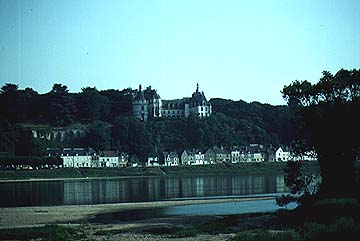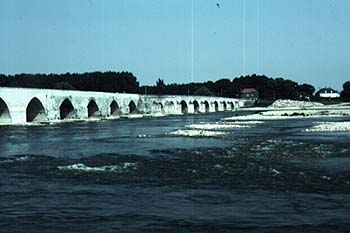|
Location: 47N 0E (France); length: 1000 kilometres (600 miles); drainage basin: 120,000 square kilometres (45,000 square miles).

The Loire was of great strategic importance and as a result many forts were built along its banks. Later most of these were demolished and replaced with chateaux more suited to living in rather than defending.The Loire forms a great arc across central France. Its headwaters are in the Massif Central, from which it flows north, then west (to the south of Paris) to reach the Atlantic Ocean at Nantes. Major cities on the Loire include Orleans, Tours and Nantes. The flow of the Loire is unusually variable for a western European river; it flows in a wide shallow channel and it is subject to frequent flooding. As a result many of the banks are lined by levees. It was a strategic routeway in France, and as a result the land was jealously guarded by French nobility for many centuries. As each wealthy family claimed a piece of the valley, so they built castles to protect their investment. Many of these were later pulled down and replaced with stately homes - chateaux. The largest, and one of the most famous of Loire chateaux, is Chambord near Blois. The chateaux, together with the vineyards that line the flanks of the river valley, now make the Loire one of the main tourist destinations in France. However, the Loire has also been chosen as the site for the development of many nuclear power plants, and this has given it the nickname of the 'Loire nucleaire'.

The Loire is a broad and very shallow river. For much of its length it has therefore never been used for transport. |